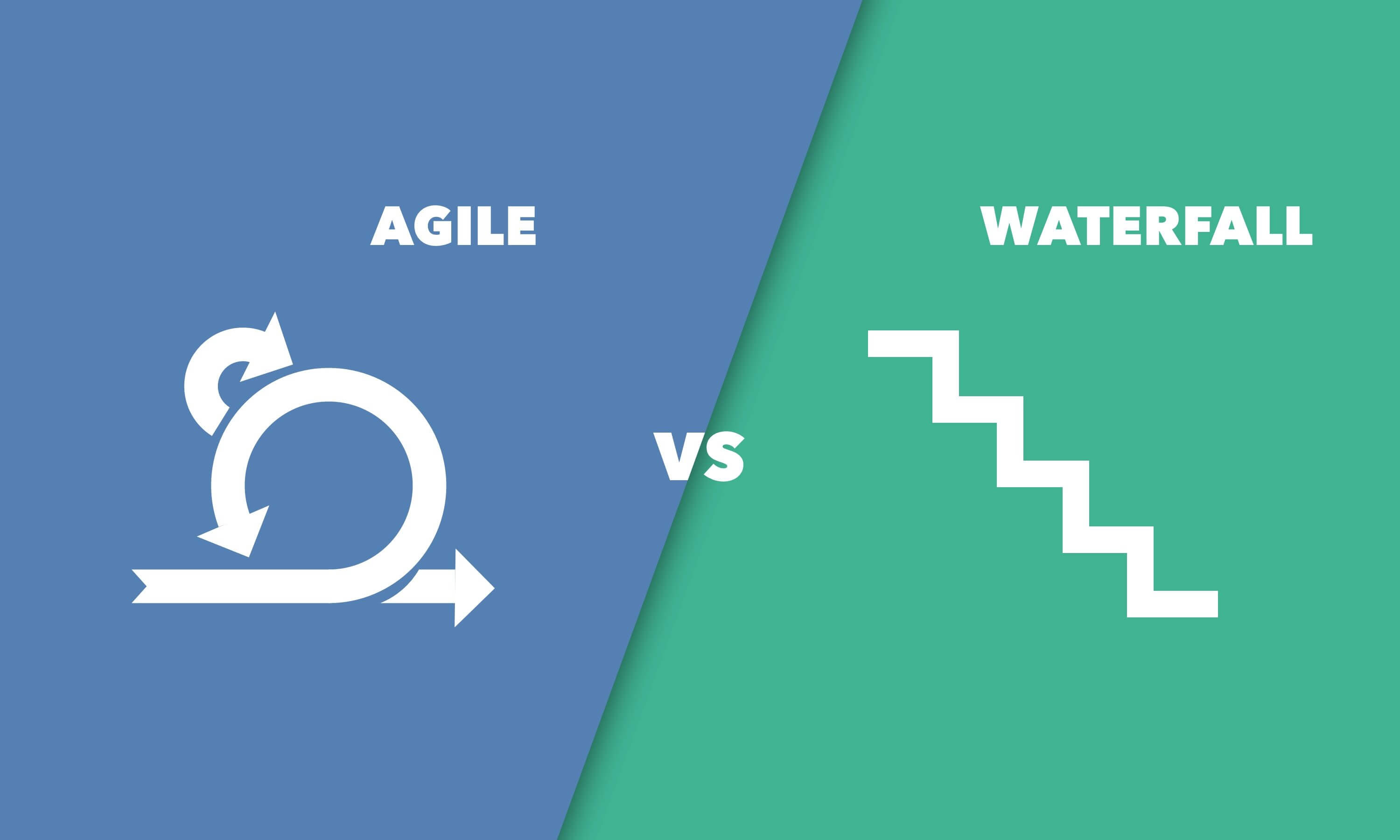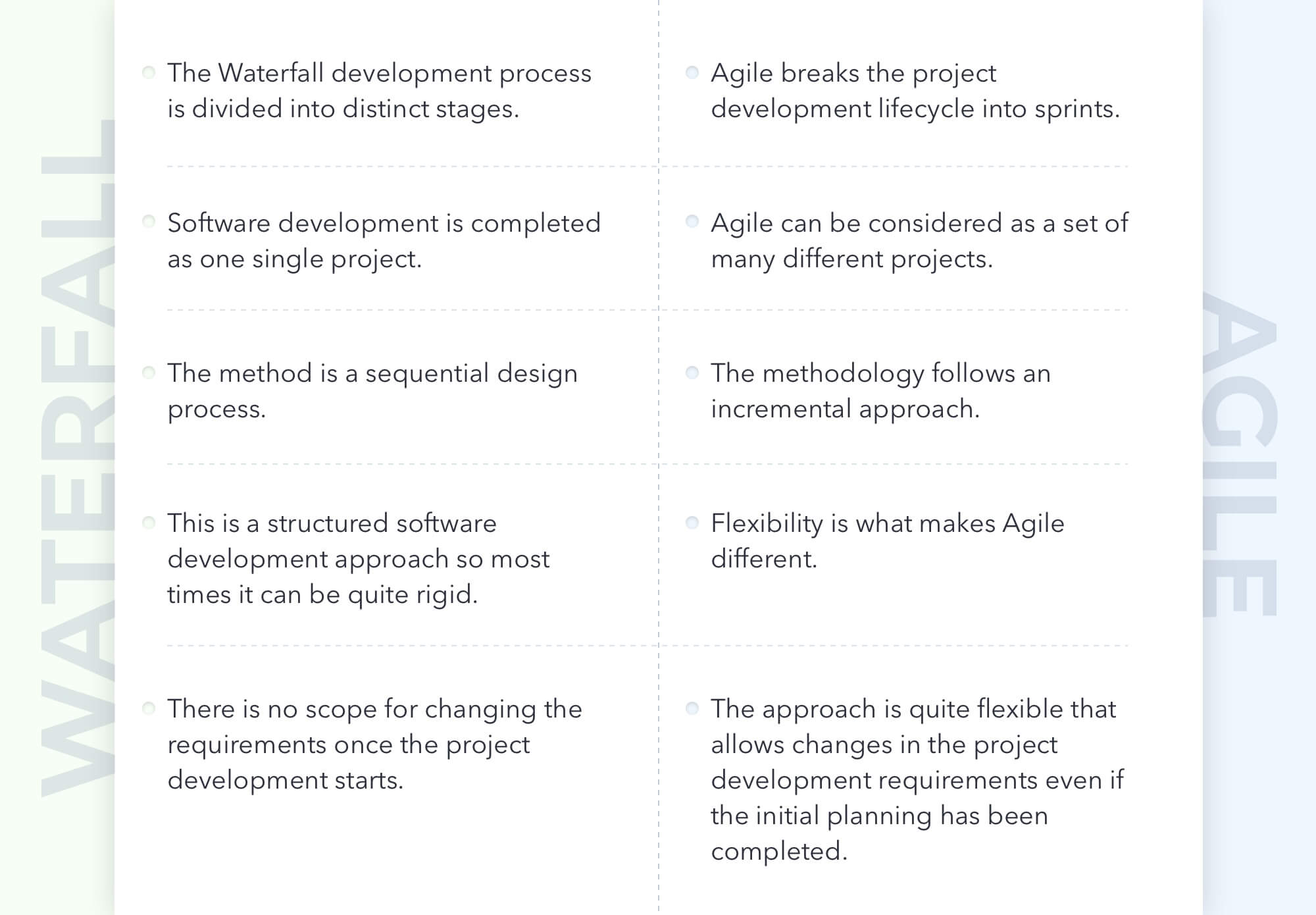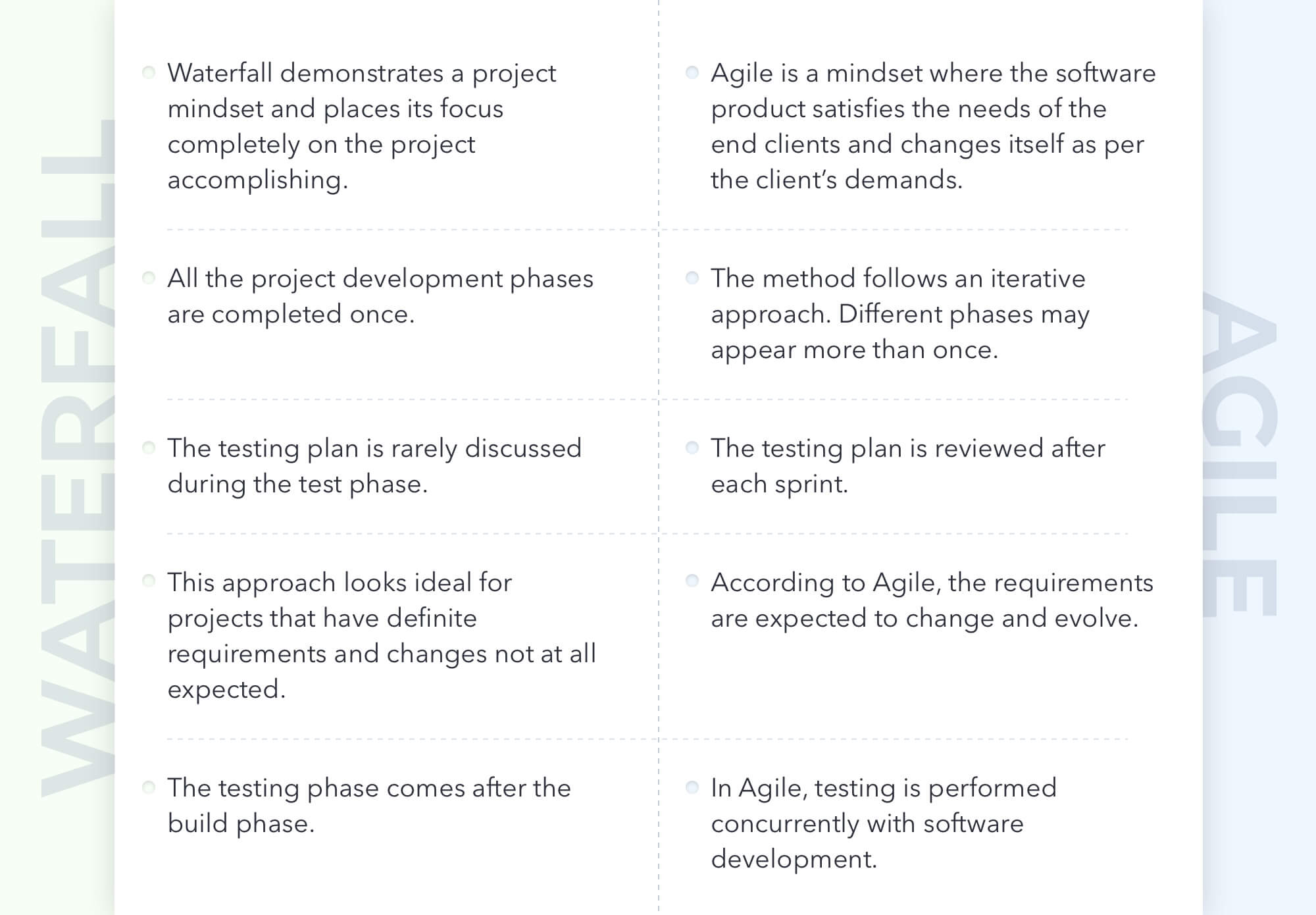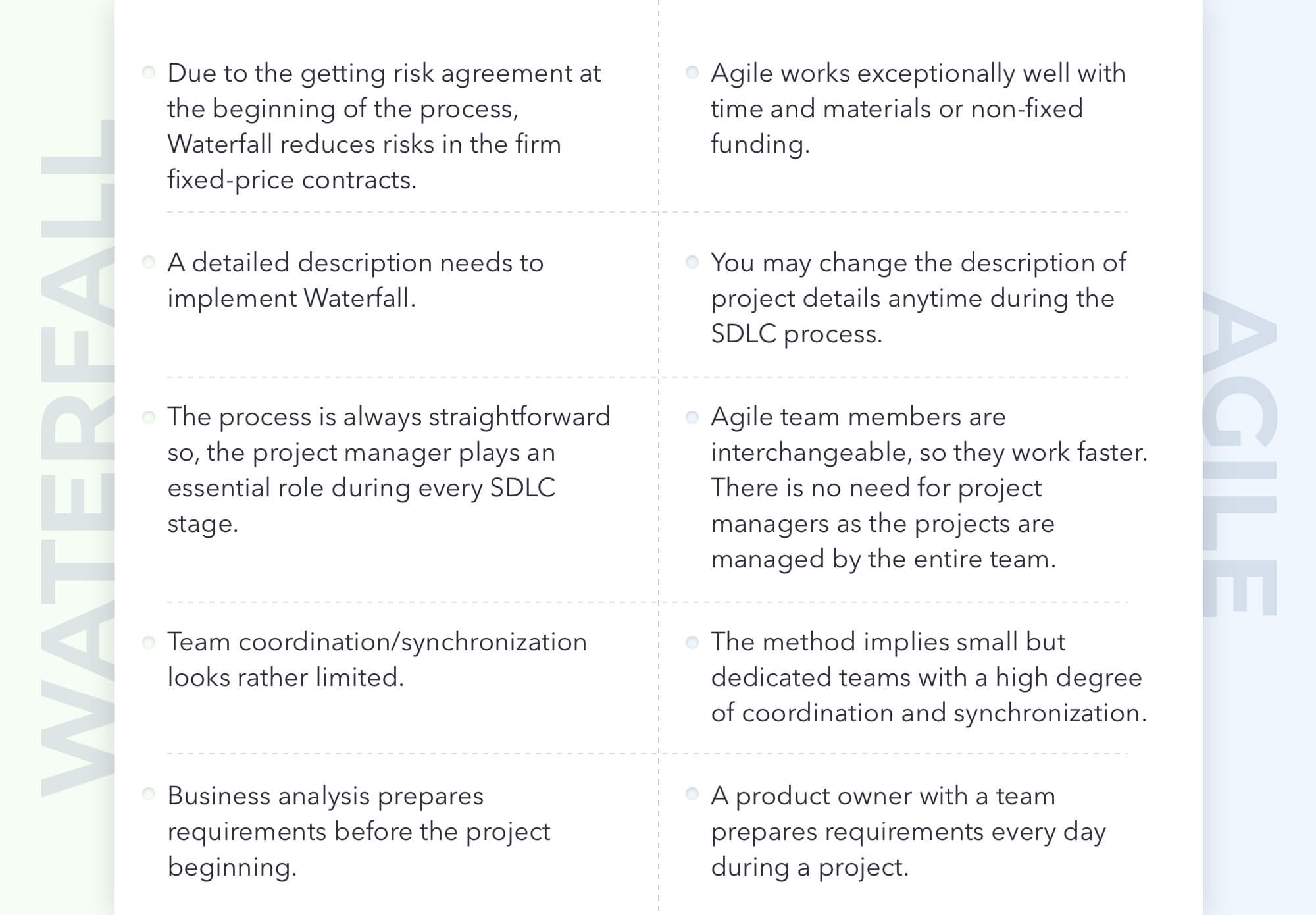Agile Waterfalls
Agile Waterfalls
One of the most challenging and eternal questions in project management is “What way of organizing the work of software development to choose?” This is about development methodologies. This topic gets a lot of discussions and hot debates as every software development project start with the selection of implementation methods.
There are two basic and most popular methods of managing projects in the modern software development industry: Agile and Waterfall.

- Waterfall is the first of them. It can be also called the traditional method of software development.
- Agile project management is the second one. This specific type of Rapid Application Development is newer than the first type (it originated in the 2000s) and it is typically implemented with Scrum or Kanban.
Agile vs. Waterfall
What is the difference between both methodologies? They both are usable and mature. The selection of a certain methodology depends on the particular project and the company that performs it.
In this article, we define the main advantages and disadvantages of each approach to software development and offer a quick differentiation of both methodologies, which we have posted in a handy infographic at the end of the post. So, let’s get started!
If you have no time for details, here’s a brief Agile vs. Waterfall comparison table:
Quick Agile and Waterfall Comparison Table

If you want to get some details, it is worth starting with the basics.
Waterfall model advantages
- This is a clear framework and one of the easiest models to manage. You get a clear understanding of your project timeline and deliverables before the project begins. The project scope is agreed upon by the development team and the clients in advance.
- It provides faster project delivery.
- The method works well for smaller-size projects (with easily understandable requirements).
- Planning and designing look straightforward because developers and customers can agree on what will be delivered early in the development lifecycle.
- It offers well-documented processes and results. Every project phase is documented in detail to eliminate misunderstandings and shortcuts.
- Progress is more easily measured, as the full scope of the work is known in advance.
- It provides a shared load. Depending on the phase, every team member can focus on other aspects of their work.
- This is a hands-off approach. After the initial design and project plan are in place, there is little requirement for ongoing customer presence until the review phase.
- It looks rather beneficial to manage dependencies.
- It is easily adaptable for shifting teams.
Waterfall disadvantages
As you can guess, such an approach has lots of disadvantages. Here are some of them:
- It looks not ideal for large-size projects.
- The method is less effective if the requirement is not clear in the very beginning.
- It is rather difficult to move back to make changes in the previous stages.
- The testing process starts once development is over. So, there is a high chance of bugs to be found later in the development where they are expensive to fix.
- After the project is finished, the customer can be disappointed with its results, because all the work on a project was based on the initial documentation, and the outcomes may not meet the customer’s expectations.
- It provides less customer involvement. Some clients will want more involvement as the project proceeds.

Agile method advantages
- The methodology is focused on the client process. It makes sure that the client is continuously involved in every stage. Customers have an opportunity to see the work being delivered and to make decisions and changes throughout development.
- Customers have a sense of ownership by working extensively and directly with the project team throughout the project.
- Development is often more user-focused. This is the result of more frequent involvement of the customer.
- It guarantees that the quality of the development is clearly maintained.
- The Agile offshore development process is completely based on incremental progress.
- Teams are extremely self-organized and motivated. This provides better results for development projects.
- The clients know exactly what is complete and what is not which decreases risks in the development process.
- The deliverables are flexible. Stakeholders can set deliverables by order of importance.
- It offers higher quality and user-friendly products. Clients can provide feedback after each sprint, so the products developed using this method often end up being very user-friendly.
Agile disadvantages
- It is not useful for small development projects.
- It provides intense commitment. Unlike the traditional approach, Agile development only works well when the entire development team is committed to the project for the duration.
- The projects can easily go off track if project managers are not sure what outcome they want.
- The meetings require the presence of an expert to take important decisions.
- Communication issues. The method requires a high level of collaboration, so development projects using this methodology will also require a high level of communication.
- The cost of implementing the methodology is a little more compared to other methodologies.
- The high degree of customer involvement may present problems for some clients who may not have the time or interest in this type of participation.
- The close working relationships in the iterative approach require working in the same physical space, which is not always possible.
Detailed Differences Between Agile and Waterfall Models
Conclusion
Both popular software development methodologies are rather different and good in their respective way.
To summarize this post, let’s define key differences and highlight them here:
- Waterfall suits projects with well-defined requirements where no changes are expected. Agile looks best where there is a higher chance of frequent requirement changes.
- Waterfall is an easy-to-manage and sequential approach. Its iterative opponent is very flexible and allows you to make changes in any phase.
- In Agile, project requirements can change frequently. In the traditional model, it is defined only once by the business analyst.
- Agile performs testing concurrently with software development whereas in Waterfall methodology testing comes after the build stage.
- In an Agile project’s description, details can be altered anytime, which is not possible in Waterfall.
What software development methodology do you prefer? Which method do you prefer in the battle of these giants? Feel free to share your experience below.




Comments
Post a Comment